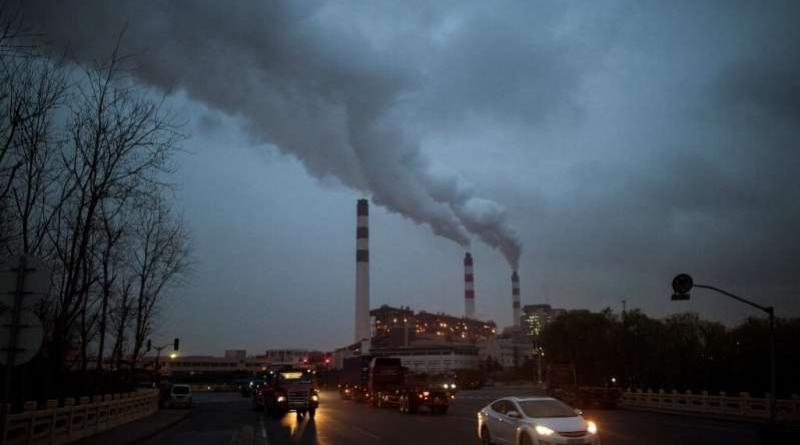Major economies drivers, victims of sea-level rise.

Sea-level rises pose increasing peril to small island nations and at-risk coastal communities but will also significantly impact the world's largest economies.
Ahead of the publication of a landmark UN report on oceans and climate change, here is a look at the impacts faced by China, the United States, the European Union and India, as well as their respective contributions to the problem.
CHINA
According to the EU's Emissions Database for Global Atmospheric Research, China in 2017 spewed out 10.8 gigatonnes of planet-warming carbon dioxide—around 29 percent of the world's total.
While on a per capita basis China's emissions are relatively low and on a par with Europe, the rapid growth of the world's second economy is likely to impact sea-level rises for centuries to come, including close to home.
The Intergovernmental Panel for Climate Change's forthcoming special report on oceans and cryosphere—Earth's frozen areas—highlights this.
Shanghai, China's most populous city, sits on the coast flanked to the north and south by the Yangtze and Qiantang rivers.
The IPCC report, of which AFP has obtained an official draft summary, says that if emissions continue at current levels, Shanghai could face sea-level rises of 2.6 millimetres a year later this century.
The value of its exposed assets is set to hit $1.7 trillion by 2070, according to one study, and half of the megacity's flood defences could be regularly inundated by 2100.
Nor is Shanghai an outlier. One study from 2015 showed that of the 20 cities most at risk from sea-level rises globally, nine were in China.
Yet China's emissions are still growing, driving global year-on-year increases, and Beijing might prioritise surviving a Sino-American trade war over the environment.
"The climate agenda is slowly losing steam due to the economic situation that we are experiencing here in China," Li Shuo, senior global policy advisory at Greenpeace International, told AFP.
UNITED STATES
The largest historic emitter, the US, with its heavily developed eastern seaboard and coastal metropolises, is particularly vulnerable to encroaching seas.
In 2017, the US emitted 5.1 gigatonnes of carbon dioxide.
According to one of the studies referenced in the IPCC report, without global emissions cuts a 1.2-metre sea-level rise could increase by fivefold the areas of the eastern US flooded regularly.
Another study warned that New York faced an increased flood risk with an average of 1.3 mm sea-level rise annually.
It said the Big Apple could expect a 2.25-metre flood event once every five years between 2030-2045. In 1800, such a flood was expected every 500 years, on average.
Since 2000, the eastern seaboard has been struck by a string of devastating superstorms, including Hurricane Katrina in 2005 and Sandy in 2012.
"All it takes it one event like that to displace hundreds of thousands of people, to destroy massive infrastructure that costs us in the billions of dollars," Michael Mann, professor and director of Penn State University's Earth System Science Center, told AFP.
EU
The world's largest single market produced 3.5 gigatonnes of CO2 in 2017, but several member states have committed to slashing emissions.
Yvon Slingenberg, director of climate policy for the European Commission, told AFP at recent UN climate talks she was confident all member states would sign up to net-zero emissions "before the end of the year".
Europe faces a lower risk generally from sea-level rises, although the IPCC report mentions increased risk from flooding in the Rhine delta, a major trading vein.
Higher temperatures from emissions could slow the Atlantic Meridional Overturning Circulation (AMOC) weather system, leading to more severe winter storms across the continent.
INDIA
Around 260 million people—roughly a fifth of Indians—live in coastal regions already struggling with storm surges exacerbated by climate change.
In 2017, India emitted 2.4 gigatonnes of carbon dioxide.
The IPCC report notes that the Indian summer monsoon, a vital source of crop water for hundreds of millions, has weakened significantly since 1950, likely as a result of the Indian Ocean heating up.
Harjeet Singh, global climate lead for ActionAid, told AFP that India was uniquely vulnerable to rising seas—and said millions could be displaced over the decades.
"The question is where are they going to go," he said.
"We are talking about one of the most populous countries in the world which means it's eventually going to lead to conflict between the host and displaced communities. We are sitting on a timebomb."
29 August 2019
PHYSORG




